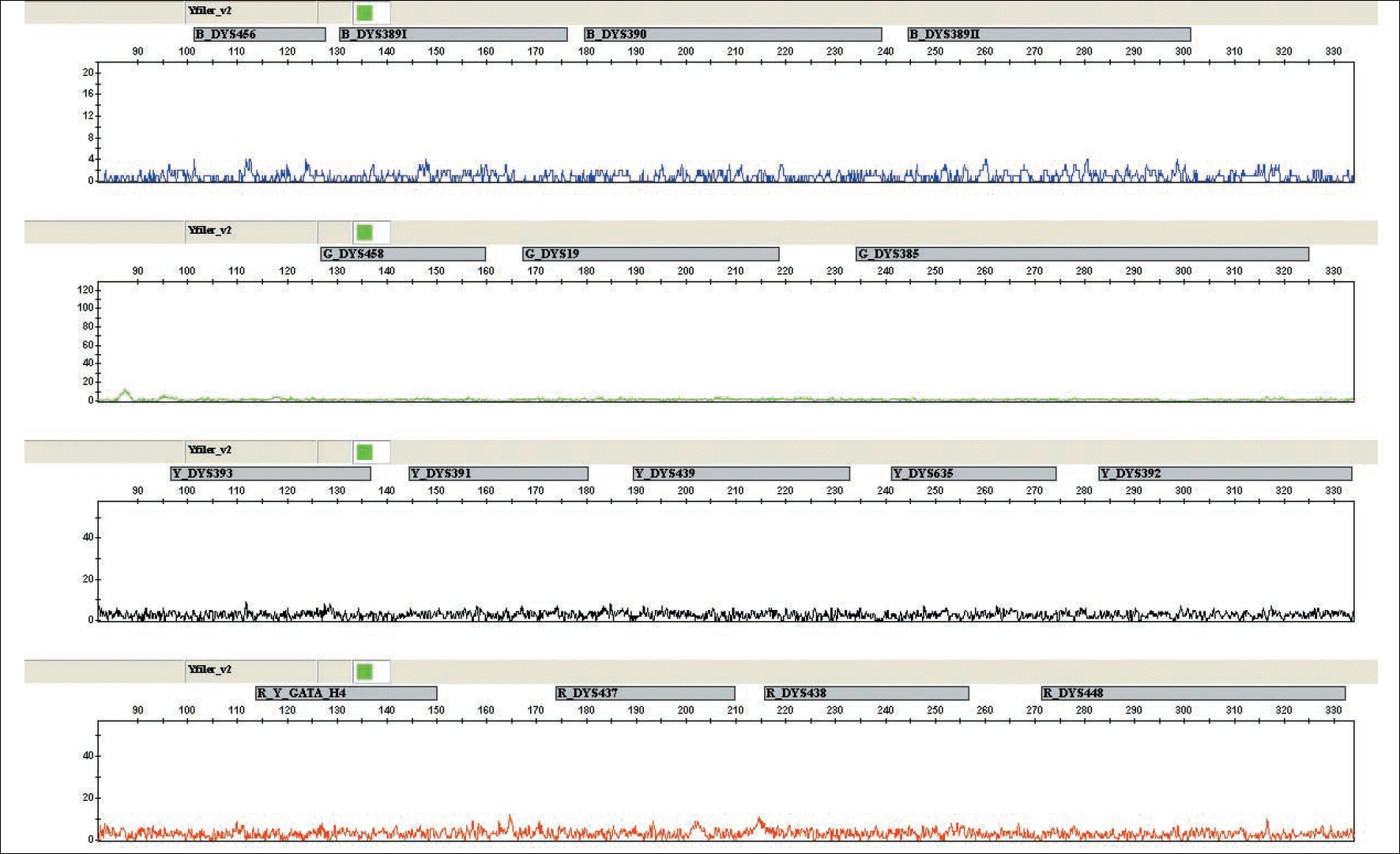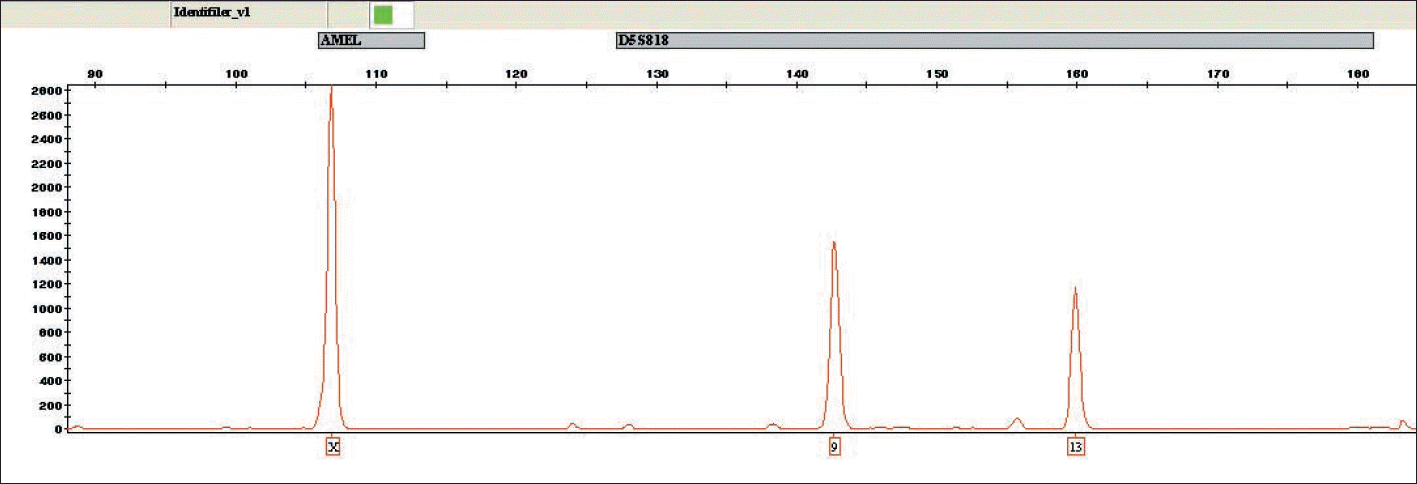Abstract
Sex typing may become the start point in investigations that are usually performed through amelogenin typing. In cases involving genotype-phenotype discrepancy, amelogenin typing could yield misleading results. The rare XX male syndrome is characterized by a phenotypic male with a 46, XX female karyotype. In this point, this case report would help understand the importance of genotype-phenotype discrepancy.
Go to : 
REFERENCES
1. Ferlin A, Moro E, Rossi A, et al. The human Y chromosome’ s azoospermia factor b (AZFb) region: sequence, structure, and deletion analysis in infertile men. J Med Genet. 2003; 40:18–24.
2. Foresta C, Moro E, Ferlin A. Y chromosome microdeletions and alterations of spermatogenesis. Endocr Rev. 2001; 22:226–39.

3. Rickman L, Fiegler H, Shaw-Smith C, et al. Prenatal detection of unbalanced chromosomal rearrangements by array CGH. J Med Genet. 2006; 43:353–61.

4. de la Chapelle A, Hortling H, Niemi M, et al. XX sex chromosomes in a human male. first case. Acta Med Scand. 1964; 175:25–8.
6. Vorona E, Zitzmann M, Gromoll J, et al. Clinical, endocrinological, and epigenetic features of the 46, XX male syndrome, compared with 47, XXY Klinefelter patients. J Clin Endocrinol Metab. 2007; 92:3458–65.
7. Queralt R, Madrigal I, Vallecillos MA, et al. Atypical XX male with the SRY gene located at the long arm of chromosome 1 and a 1qter microdeletion. Am J Med Genet A. 2008; 146A:1335–40.
8. Ferguson-Smith MA. X-Y chromosomal interchange in the aetiology of true hermaphroditism and of XX Klinefelter’ s syndrome. Lancet. 1966; 2:475–6.
Go to : 




 PDF
PDF ePub
ePub Citation
Citation Print
Print





 XML Download
XML Download